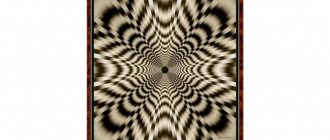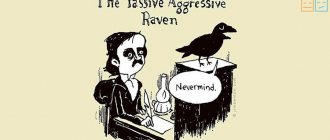Rationalization is the process of searching for explanations and justifications for everything that happens to a person. It extends to certain situations, emotions, thoughts and actions. In this way, people protect their psyche from traumatic experiences. From the outside it seems that everything is logical. However, in reality it is often an attempt to hide real motives and feelings. Is this always a good thing? How does this behavior affect the lives of each of us?
What is rationalization
Rationalization in psychology is a defense mechanism in which a person seeks a logical explanation for actions, behavior, thoughts and feelings, thus protecting his self-esteem and self-esteem from the effects of negative emotions. We can say that rationalization is an unconscious attempt to justify something that contradicts public opinion. That is, the individual wants to explain his actions, which are unacceptable to society, with arguments and arguments that this society will accept. It turns out that he kills two birds with one stone: both people are happy and self-esteem remains at the proper level.
An interesting explanation of the term is given in the Oxford Dictionary. According to him, rationalization is the process of giving clarity and rationality to strange and incomprehensible actions. It comes in handy when there is a need to hide real motives and feelings from others.
If we say what rationalization is in simple words, the definition will look like this: this is the search for motives that explain an undesirable pattern of human behavior and help him maintain a state of comfort and internal harmony.
Let's give an example. The person did not consider it necessary to help a close relative in a critical situation. He justifies his action by saying that his help would not have brought the desired result, but, on the contrary, would have only made things worse. There is another example. The alcoholic justifies his addiction by saying that the doctor recommended drinking small doses of alcohol to treat his illness.
The way a person will justify himself is chosen unconsciously. The real reasons for self-justification are just as unconscious. An individual simply chooses those words that will present him to society in a favorable light and help maintain respect in his own eyes.
Sometimes it happens that after the acquittal process is over, a person thinks about his behavior. And he understands that some of his reasoning and words are only partly true. But he finds an excuse for this too, because lowering his self-esteem was not part of his plans. The main task at this moment is to fully comply with the ideal invented by yourself.
Unconscious rationalization cannot be called deception, but it is considered the most dangerous psychological defense mechanism. This is despite the fact that in most cases the person's words are generally true. The danger is that life becomes too predictable, because every step and every action is always justified and justified.
Rationalization as a psychological defense mechanism
Rationalization is a psychological defense mechanism that allows a person to reconcile his expectations and reality, as well as justify his own feelings or actions. We can find the most convenient explanation for what happened. For example, if we cannot afford to buy a large apartment in a good area, we will quickly come up with not always adequate rational arguments in favor of another, more modest one. The main thing is not to lose self-respect because your financial capabilities do not match your ambitions.
Rationalization in psychology, like other defense mechanisms, eases anxiety and reduces the level of tension. This is an unconscious attempt to escape from internal conflict and not lose self-respect.
Accordingly, this method of protection is often associated with depreciation. It is easier for a person to say that a particular thing has no value for him than to admit that he could not get it. Our psyche strives for certainty. And with the help of rationalization, we logically explain one or another of our own actions.
Varieties and methods
Rationalization, considered as a psychological defense mechanism, comes in two types:
- direct - the individual justifies his own actions, thoughts and feelings;
- indirect—external objects are involved in justification.
Also in psychology there are several subtypes of this process:
- Personal or group rationalization. In the first case, the individual protects exclusively himself. In the second - a group of people with which he associates himself.
- Current rationalization. Valid for a short period of time.
- Anticipatory rationalization. The unpleasant situation has not yet occurred, and the person already begins to look for excuses for his actions in advance.
Rationalization as a method of psychological defense is characterized by the use of different methods. There are 6 of them in total:
- Depreciation of the goal. The loss in the competition is explained by bad prizes, which it would be foolish to strive for.
- Discrediting the victim. Let's say a person offended someone. In his defense, he will say that the opponent himself is to blame and in a similar situation would have acted in exactly the same way.
- Strengthening the role of circumstances. When rationalizing, circumstances are always used to justify what happened.
- Harm for good. Many people sincerely believe in the rightness of their actions towards others. They explain them with the words: “it will be better for them,” “I tried for their own good.”
- Discrediting oneself. A person makes himself a victim. He demonstratively agrees that he did a bad thing and talks about how bad it makes him. Who would argue with such a sufferer?
- Self-deception.
Each of the listed methods of rationalization causes certain harm to the human personality.
At-risk groups
Rationalization as a way to protect the psyche from unwanted emotions is quite popular. Many people use it. But most often those who really need psychological help. There are 2 categories at risk:
- Obsessive personalities. They doubt everything. And it doesn’t matter what it is - the person himself, his abilities, the people around him, his work, etc. All the doubts they have over time become obsessive thoughts.
- Sociopaths. It is difficult for such people to build adequate relationships with society, as well as accept generally accepted rules and norms. They often show aggression and impulsiveness.
Rationalization is dangerous in any case, regardless of whether the person is at risk or not.
Who most often resorts to this method of protection?
Which groups of people use rationalization most often? Of course, anyone can resort to it, but psychologists have identified two special groups who really need psychological help:
1. Obsessive personalities. These are people who constantly doubt everything: themselves, their abilities, the people around them, their work, and so on. They are also susceptible to obsessions, that is, a negative stream of thoughts that become intrusive.
2. Sociopaths. People who shun society and do not accept the social norms of that society. They are also characterized by impulsiveness and aggressiveness.
Psychology continues to study this method of psychological defense to this day. This is a very interesting method, but very dangerous for any person.
Just think how much harm this method of defense brings to you and me. Instead of accepting their mistakes and truly repenting and continuing the struggle, people sometimes come up with ridiculous excuses for themselves, sincerely believing in them. Rationalization is dangerous, so there are methods for its treatment, special training and exercises. Author: Vera Chuguevskaya
Consequences
Sometimes it seems that rationalization has nothing wrong with it, because, let’s say, it helps to “save face” and get out of any situation with honor. However, everything is much more complicated. This method will not solve the problem. A person only disguises it and tries to protect himself from it. He tries to show that he is better than he really is, and this only complicates the situation.
Plus, with rationalization, labeling, simplification, and the construction of incorrect patterns of behavior occur. Again and again, a person acts according to pre-prepared patterns. As a result, his life becomes boring and gray. It is difficult to surprise an individual with anything. Yes, he doesn’t want this, because he loses interest in reality.
Basic Concepts
We owe the origin of this term to the great scientist Sigmund Freud, as well as to his daughter Anna Freud, who complemented the concept introduced by her father, giving a new impetus to rationalization.
We recommend: Projection in psychology
Rationalization is a method of psychological defense that allows us to respond to actions, situations, words, negative feelings and thoughts that cause us unpleasant feelings. This psychological defense allows you to hide negativity by masking these feelings, replacing them with more acceptable ones by society.
At its core, rationalization is the justification of thoughts, feelings, actions, desires that are not characteristic of a person. It is this method of protection that is popular and widespread in practice, since our behavior depends on many factors that influence us. When we ourselves explain our behavior through analysis, the choice falls on the most acceptable motive for us, that is, we rationalize.
If our rationalization occurs unconsciously, then it cannot be considered a lie and deception. Although this mechanism is not considered a sham, the psychology of this method is considered the most dangerous, even if we take into account that there is a small amount of truth in it. People who resort to this method of defense make their world and life logically predictable, having their own justification (justification) for each of their actions.
Rationalization allows a person to get rid of such burdens as anxiety and tension. If you find yourself in an awkward, unpleasant situation, thanks to rationalization you will not lose face and will come out of any situation with your head held high. Some scientists in the field of psychology have said that rationalization allows you to remain in the crowd, while feeling like a whole, real person.
Recommended: What is suppression?
Let's supplement the theory with examples. Let's imagine a situation: a student did not pass the exam or received the wrong grade that he wanted. What will we see?
We will see a complete denial of our guilt: “The teacher assessed me in a biased manner,” “He deliberately failed me,” “I answered everything perfectly!” Have you seen this in your life? Most likely, yes, and more than once.
Let’s now imagine a work team where there is always an employee who, in his own words, is ideal, but here’s the problem: “The boss is stupid and envies me, so he doesn’t promote me!”, “Yes, I’ve done so much for this company, but I’m not drops are not appreciated here!” Painfully familiar, isn't it?
Such people first deftly and believably, with appropriate facial expressions, gestures and intonation, first convince everyone around them that they are right, and then they themselves begin to sacredly believe in their words. Their justification becomes an undeniable truth for everyone. Those people who use rationalization think through several possible options for their further actions and their possible results.
We recommend: Human subconscious
A person who is afraid of losing self-respect resorts to rationalization, justifying not only his actions, but also the actions of other people. The person himself is not able to accept these very actions or behavior, because his personal self-esteem will be hurt. All justifications are constructed exclusively in a logical way.
When a conflict arises, a person, using the rationalization mechanism, reduces both for himself and for other participants in the conflict the causes of the dispute. This is protection.
Pros and cons of rationalization
Like any other method of psychological defense, rationalization has its advantages and disadvantages. Benefits include:
- Maintaining self-confidence.
- Elimination of anxiety, overstrain.
- Maintaining the required level of self-esteem and self-respect.
- Endowing the surrounding world with validity and predictability.
- The ability to justify absolutely all your actions and not strive for change.
Among the shortcomings of rationalization, the following points stand out:
- As stated above, the problem still remains unresolved. It still exists and requires a solution.
- Due to attempts to appear better than others, personal growth slows down or stops altogether.
- Thinking is subject to patterns. Over and over again, a person acts according to the same patterns. He knows in advance what he will say and how he will behave in a given situation.
- A person loses faith in something impossible, because in his head there is an explanation and justification for everything.
Frequent use of rationalization over time leads to the development of neuroses and various mental disorders, as well as increased internal conflicts.
Invention and rationalization
⇐ PreviousPage 7 of 9Next ⇒Scientific and technical potential, including also the result of research and development, is measured by the design and planned effect of completed research, primarily inventions and innovation proposals.
A rationalization proposal is recognized as a technical solution that involves the creation or change of the design of a product, production technology and equipment used, the composition of the material, which is new and useful for the enterprise to which it is submitted, as well as a new organizational solution for it, which provides savings in labor, raw materials, fuel and energy and other material resources or other positive effect. It must have local or limited novelty, which is determined on the scale of an enterprise or organization, one or more industries.
The main types of rationalization proposals are presented in the table.
Main types of rationalization proposals
| Variety | Getting started |
| Related to product design or material composition | From the date of introduction into economic circulation |
| Related to technology (method) | From the date of commencement of use in the production process |
| Containing an organizational decision | From the date of start of use. |
| Used in a prototype | From the date of transfer of the prototype into production. |
The right of authorship to a rationalization proposal belongs to the citizen who created the rationalization proposal through his creative work.
If several citizens participated in the creation of a rationalization proposal, all of them are considered co-authors of such a rationalization proposal.
Citizens who provided the author of a rationalization proposal only with technical, organizational or material assistance or who contributed to the registration of rights to the rationalization proposal and its use in production are not recognized as co-authors.
An invention that is granted legal protection is a technical solution that is new, has an inventive step and is industrially applicable.
Inventions are recognized as technical solutions (design and technological), formulations and chemical compositions of substances and materials, new measurement techniques, etc. (except for methods of organization and management) that meet the following criteria:
— originality (in comparison with patented or public analogues, respecting the priority of authorship of patented objects);
— non-triviality (so-called based on the results of specially cited research and development);
— expressed practical usefulness in clearly named areas of application.
A form of protection of property for inventions is a patent, which certifies state recognition of the novelty of a technical solution, the potential suitability of the invention for society and assigns to its owner (patent holder) a monopoly right to this invention for a certain period.
The right to an invention is protected by the state and is certified by a patent, which certifies the priority of the invention and the exclusive right to use.
The patent is valid from the date of filing the application with the state institution “National Center for Intellectual Property” of the Committee on Science and Technology under the Council of Ministers of the Republic of Belarus for twenty years.
An application for an invention must contain:
— an application for a patent indicating the author (co-authors) of the invention and the person (persons) in whose name the patent is requested, as well as his (their) place of residence or location;
- description of the invention, revealing it in completeness sufficient for implementation;
- a claim that expresses its essence and is entirely based on the description;
— drawings and other materials, if they are necessary to understand the essence of the invention;
- abstract.
An invention is new if it is not part of the prior art. The prior art includes any information that became publicly available in the world before the priority date of the invention.
An invention is industrially applicable if it can be used in industry, agriculture, healthcare and other fields of activity.
The author of an invention , utility model, or industrial design is recognized as the individual whose creative work created them; he owns the personal non-property and property rights associated with them.
If an invention, utility model, industrial design is created by the joint creative work of two or more individuals, they are recognized as co-authors .
The costs of rationalization and invention are included in general production (factory overhead) costs.
To enhance innovation processes at an enterprise, it is necessary to pay attention to inventive and rationalization activities.
Efficiency of using innovations
The effectiveness of innovations is assessed using the following system of indicators:
Cost-effectiveness of innovation costs . It is calculated:
Рз = (DP/Zi) x 100%
where DP is the increase in profit received from innovation; Zi — costs associated with the implementation of innovation, rub.
The payback period of innovation is determined by the formula:
Tok = Zi / Psr
where Psr is the average annual profit received from innovation, rub.
The introduction of innovation can provide the following types of effect
Types of effect from innovation activities
| Economic effect of innovation in an enterprise | Economic effect from the sale of innovations of our own development and purchased innovations | ||
| Economic effect | Scientific and technical effect | Social effect | Ecological effect |
| — profit from licensing activities; — profit from the introduction of inventions, patents, know-how; — increase in sales volume; — improving the use of production capacity; — reduction of investment payback period; — improving the use of resources: increasing labor productivity; increase in capital productivity; acceleration of turnover of working capital, etc. | — number of registered copyright certificates; — increasing the share of new information technologies; — increasing the share of progressive technological processes; — increasing the production automation rate; — increasing the organizational level of production and labor; — increase in the number of publications (citation index); — increasing the competitiveness of the enterprise and its products in the markets of industrially developed countries | — increase in income of enterprise employees; — increasing the degree of labor safety; — increase in working hours; — improvement of working conditions; — increasing the life expectancy of workers; - reduction in morbidity | — reduction of harmful emissions into the atmosphere, soil, water; — reduction of production waste; — increasing the ergonomics of production (noise, vibration, etc.); — reduction of fines for violation of environmental legislation |
The economic effect of innovation is a general indicator of the economic assessment of the implementation of innovation and expresses the amount of profit or damage from innovation. If innovations are implemented in a technological process in order to achieve a competitive advantage in terms of costs (cost savings), then when determining their economic efficiency, the following is used:
— variant approach;
— methods of comparative economic efficiency.
The variant approach assumes that the target (cost savings) can be achieved “with innovation” or “without innovation”, but in both cases additional capital costs (investments, capital investments) are required.
Comparative economic efficiency methods determine that:
— the result is expressed in cost savings;
— costs are considered as one-time expenses.
To determine efficiency, the coefficient of economic efficiency of investment in innovation (Ea) is calculated:
Ea =
where C1, C2 are the cost (current costs) of the annual production volume according to the options “with innovation” and “without innovation”; K1, K2 – one-time costs (capital investments) for the compared options for the implementation of innovation.
Accordingly, the payback period for capital investments in innovation (Current) made to implement the options is calculated:
Current =
Since when financing options there is a difference in the timing of the implementation of costs and the resulting effect (current costs), from the system of methods of comparative economic efficiency, to assess the effectiveness of innovations, the method of reduction to a single point in time (the method of reduced costs) is used. The use of this method allows us to determine the annual economic effect in case of preference for implementing the option with innovation (Ei):
Ei = (PZ1 – PZ2) x VP2,
where PZ1, PZ2 are, respectively, the reduced costs for the options under consideration, rubles; VP2 – volume of production per year (in physical units).
If an enterprise, as a result of introducing innovation, produces a new product, then the economic effect (Eni) from its production can be determined by the formula:
Eni = (Cp - Sp) x VPpl,
where Eni is the economic effect from the production of a new product (product); Tsp – the planned price of a new product (less taxes included in the price in accordance with the law), rub.; Sp – planned cost per unit of a new product, rub.; VPpl is the planned volume of production of a new product (in physical units).
Since the innovativeness of production is expressed in changes in the level of its automation and mechanization, the following indicators can additionally be used to assess efficiency:
Labor automation coefficient (Cat):
Cat = ChRa / ChRsp,
where ChRa is the number of workers employed in automated areas, people; ChRsp – average number of employees, people.
Production automation coefficient (CAC):
Kpr = VPa / VPtot,
where VPa is the volume of products produced (work performed) in an automated way, rub.; VPtot is the total volume of products produced.
An increase in the innovative level of production is reflected in structural changes in the enterprise’s personnel (in particular, the share of highly qualified workers is increasing); the active part of fixed assets (the share of production automatic and semi-automatic machines; equipment based on new electronic technologies, etc. is increasing).
In market conditions, the relevance of quality management is due to the need to produce products that are highly competitive. High product quality is the most significant component that determines the competitiveness of products.
Competitiveness is a comparative characteristic of a product (work, service), containing a comprehensive assessment of the totality of its qualitative and environmental properties in relation to market requirements or the properties of another product.
According to GOST 15467-79, product quality is defined as a set of product properties that determine its suitability to meet certain needs in accordance with its intended purpose. Product properties are an objective feature of a product that can appear during creation, operation or consumption.
Quality level is a quantitative expression of the degree of suitability of a product to meet a specific need for it in comparison with the corresponding basic indicators under fixed production conditions. Functions of quality as an economic category:
1. Function of the measure of need satisfaction.
2. The function of the most important property of a product (work, service) without which it is impossible to gain consumer recognition.
3. The function of determining the level of such organizational performance indicators as cost, profit, profitability, price, competitiveness of the enterprise and product.
The relevance of the problem of improving product quality is determined by the following principles:
1. Quality is the main criterion for making basic purchases.
2. Quality is the main tool for reducing costs. It is always cheaper to produce initially high-quality products than to subsequently improve their quality.
3. Quality and quality management system most successfully resist competition, because offer a set of measures to control the level of quality at all stages of the production process: product policy, marketing, sales, qualified personnel, innovation and technology.
4. Quality leads to strengthening the company’s position in the market.
Product quality indicators are a quantitative characteristic of one or more product properties that determine its quality.
Qualimetry measures product quality.
In practice, indicators of the quality of industrial products are divided into single, general and complex.
Single indicators characterize individual properties of products: purpose, economical use of raw materials, fuel and energy (during product operation), reliability, energy efficiency, aesthetics, transportability, standardization and unification, patent legal, environmental, safety.
Characteristics of product quality indicators.
Purpose: indicators of composition and structure, social (obsolescence, consumer type, etc.), functional (power, productivity, speed, memory capacity, etc.).
Reliability: reliability (probability of failure-free operation, probability of failure, failure rate, etc.), durability (service life, warranty period, etc.), maintainability, storability, economical use of material resources, energy, labor resources, economical energy consumption, etc.
Energetic: compliance of the product with the motor ability and sensory organs of a person, etc.
Aesthetic: informational expressiveness (trademark, originality, fashion, rationality of form, clarity of branding, packaging and accompanying documentation, resistance to damage).
Environmental: physical (level of dust emission, noise; radio interference levels); (emissivity £, β, γ- particles) - radiation; chemical (content of toxic substances released into the environment), etc.
Safety: mechanical (wear rate, deformability, noise and vibration levels); electrical (probability of electric shock, etc.), thermal (probability of overheating and cooling); fire and explosion hazards, presence of safety signs, etc.
Patent legal: patent purity, patent protection, etc.
Standardization and unification: indicators of applicability, repeatability, etc.
Manufacturability: basic (manufacturing labor intensity, technological manufacturing cost, etc.), additional (specific material intensity).
⇐ Previous7Next ⇒
Didn't find what you were looking for? Use Google search on the site:
How to find and work through rationalization
A rational person tends to quickly analyze and evaluate various situations. From the outside it seems that even in the most complex of them he does not need time to think; he makes a decision in a matter of seconds. He always knows why circumstances turned out this way and not differently.
There are several ways to reduce the impact of rationalization:
- Think about how quickly you can analyze a situation.
- Pay attention to the connections you make between events.
- Allow yourself to at least sometimes fully feel and experience emotions. And it doesn’t matter what they will be - positive or negative.
- You should not label or explain the behavior of people around you. Just watch.
- Don't try to evaluate a situation immediately after it happens. Don't give advice.
- Give up the habit of systematization and templates.
And the most important rule in the fight against rationalization is to perceive every situation, emotion or feeling as something interesting, something that does not correspond to any patterns or stereotypes. Only in this case will life also be interesting.
Examples from life
Imagine a girl who lives in a small apartment in a residential area. She works in the center. Every day it takes 2 hours to get to work. This girl’s dream is to buy an apartment in the center. But for many years now she has not been able to save the required amount of money. And at some point she begins to look for excuses for the current circumstances. First, he convinces himself that the new apartment will probably have to be renovated, which will take a lot of effort, time and money. In addition, although the apartment will be in the center, it is far from the metro. Consequently, getting to work will be inconvenient.







